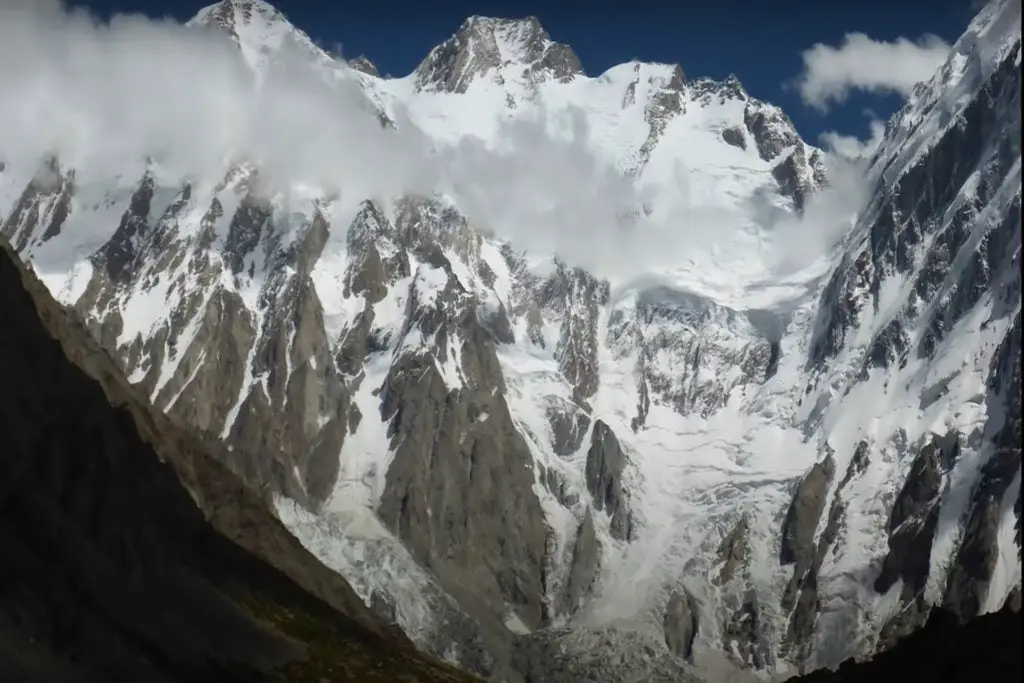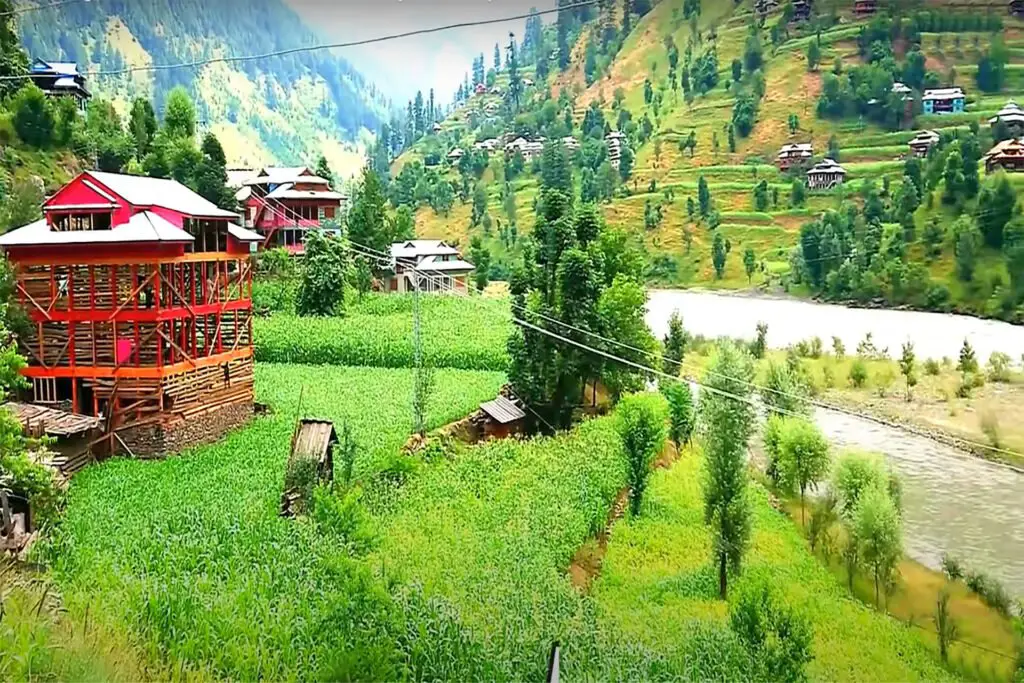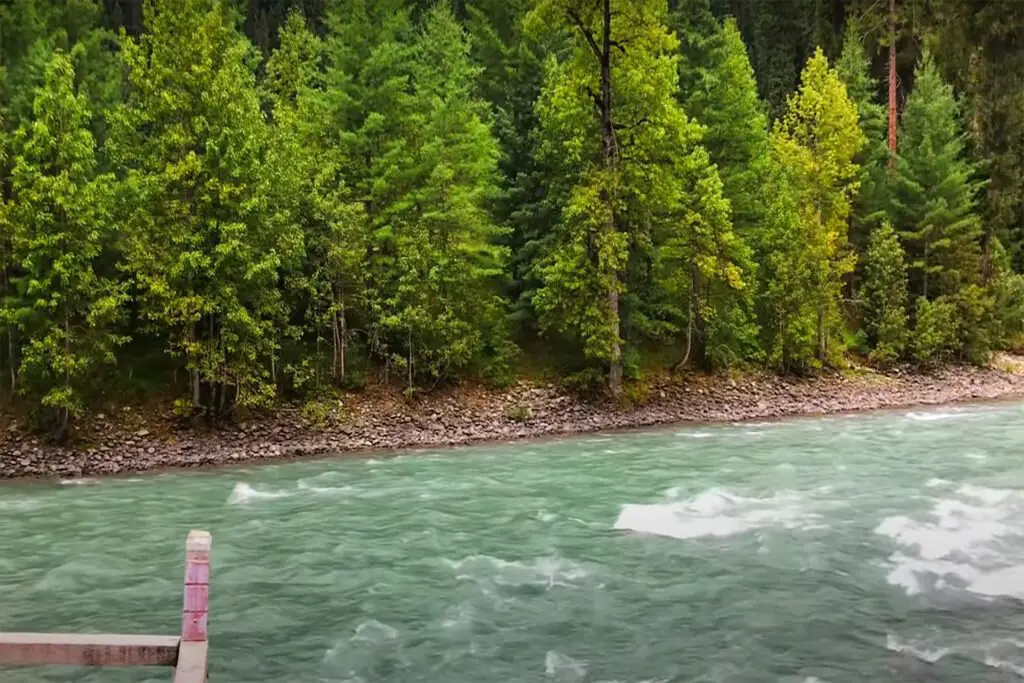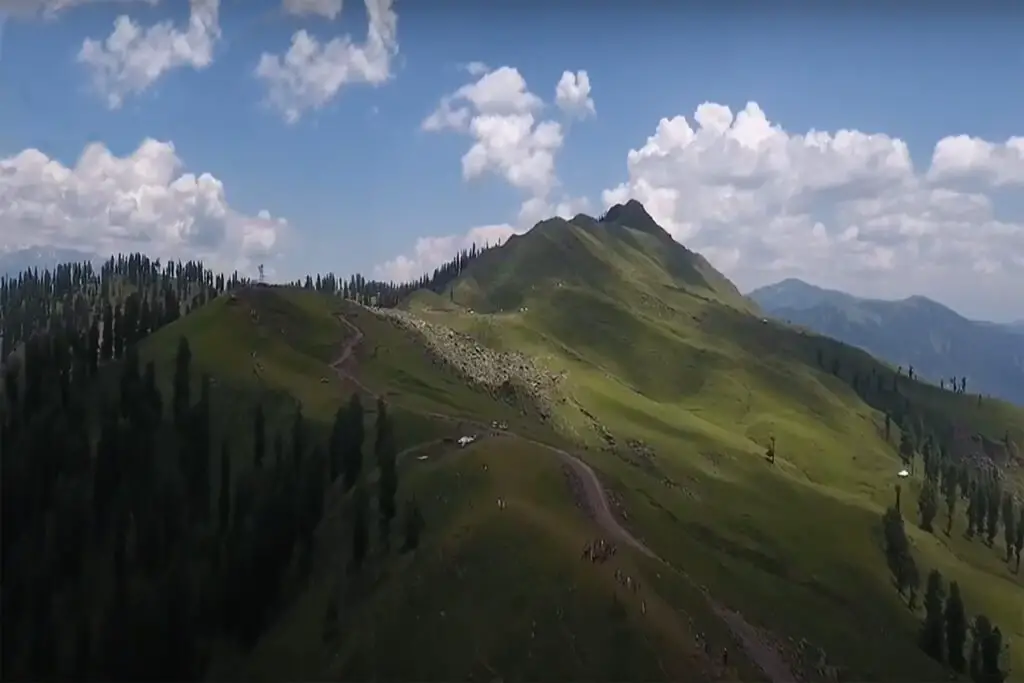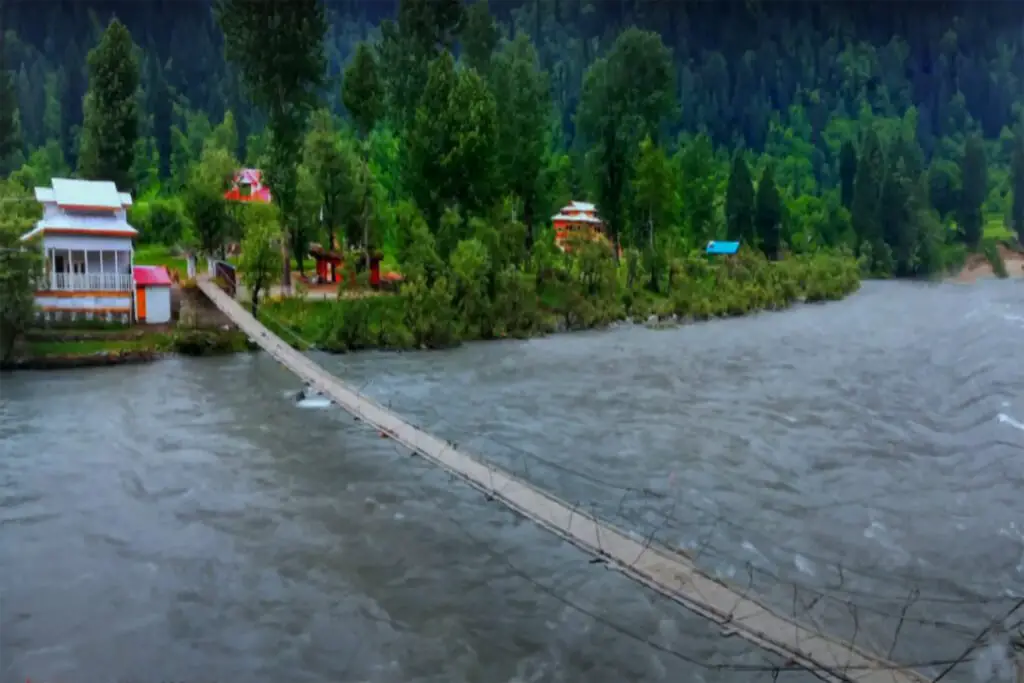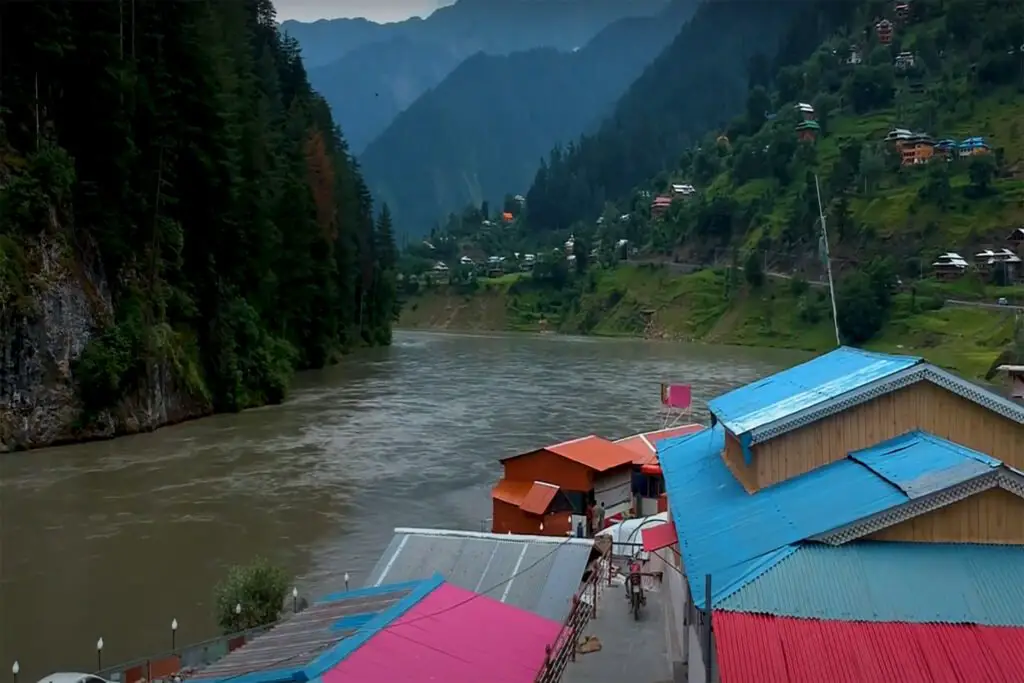The Nanga Parbat known locally as Diamer meaning “King of the Mountains”, is the ninth-highest mountain on Earth. Nanga Parbat’s height is 8,126 meters (26,660 ft) above sea level. It lies fast-northeast of the northernmost tip of the Indus River in Pakistan’s Gilgit-Baltistan region.
Nanga Parbat is the westernmost point of the Himalayan mountains, and thus the traditional view of the Himalayas as bounded by the Indus and Yarlung Tsangpo / Brahmaputra rivers is the western foothills of all the mountain ranges.
Nanga Parbat is one of the eight-thousanders. A large, spectacular peak rising above the surrounding area, Nanga Parbat is known as a steep climb, and has even been named Killer Mountain with a high mortality rate.
The name, Nanga Parbat is derived from the Sanskrit words Nagna and Parvata, which, when combined, are translated as “Naked Mountain”. The mountain is known locally by its Tibetan name Diamer or Deo Mir, meaning “big mountain”.
The Mountain is also called “The Killer, Mountain” because at least 31 people died trying to climb it before its first spectacular climb in 1953, which was completed alone and without oxygen, by Austrian alpinist Hermann Buhl.
Location of Nanga Parbat
Nanga Parbat constitutes the western extremity of the Himalayan Range and stands as one of the eight-thousanders. It is situated just to the south of the Indus River within the region of Pakistan, specifically the Diamer District of Gilgit-Baltistan. This imposing mountain’s base in some locations extends more than 7 miles (approximately 4 and a half miles) beneath the surface of the massive landform. To its north lies the western frontier of the Karakoram mountain range.
Nanga Parbat Height
Nanga Parbat is one of only two of the world’s highest peaks on the two highest mountains in the world, with the highest peaks in the world, ranking ninth and fourteenth in a row. Another mountain is the famous Mount Everest, which runs along the top of both sides.
Nanga Parbat is also the second-highest peak in the Himalayas, after Mount Everest.
The navy of the Nanga Parbat is a long ridge that runs southwest to northeast. This peak is made up of piles of snow and rocks. It has three faces: the face of Diamir, Rakhiot, and Rupal. The southwestern part of this vast valley is known as the Mazeno Wall, and it has a number of peaks.
On the other hand, the main road reaches northeast of Rakhiot Peak (7,070 m or 23,200 ft). The south/southeastern part of the mountain is controlled by the Rupal Face. The north / northwest side of the mountain, leading to the Indus, is very complex. It is divided into the face of Diamir (west) and the face of the Rakhiot (north) over a long ridge.
There are numerous subcontinent, including North Peak (7,816 m or 25,643 ft) some three miles (2 mi) north of the mainland. Near the base of the Rupal Face lies an icy lake called Latbo, above the seasonal shepherd’s village of the same name.
The History of the ascent
Initial Efforts to Concur Nanga Parbat
Due to its accessibility, efforts to reach the Nanga Parbat conference began soon after the discovery by Europeans. In 1895, Albert F. Mummery led a trek to the summit, accompanied by Geoffrey Hastings, and reached about 6,100 m (20,000 ft) at Diamir (West) Face, but Mummery and two Gurkha friends later died and re-examined the face of Rakhiot.
In the 1930s, Nanga Parbat became the focal point of German interest in the Himalayas. German climbers could not try Mount Everest, as only the British could enter Tibet. Initially, the German efforts focused on Kanchenjunga, where Paul Bauer led two expeditions in 1930 and 1931, but with its long hills and steep slopes Kanchenjunga was much heavier than Everest and there was no way forward.
The K2 was known to be still strong, and its remoteness meant that even reaching its destination would be a daunting task. Therefore, Nanga Parbat was one of the highest mountains in the world and was regarded by archaeologists as a potential for climbers.
The first German expedition to Nanga Parbat was led by Willy Merkl in 1932. It is sometimes called the German-American voyage, as the eight sailors included Rand Herron, an American, and Fritz Wiessner, the next American citizen.
Although the group were strong prostitutes, no one had any knowledge of the Himalayan, and poor planning (especially the limited number of guards), as well as bad weather, prevented the group from moving beyond Rakhiot Peak northeast of the Nanga Parbat summit, which was reached by Peter.
Aschenbrenner and Herbert Kunigk, but found the possibility of a route passing through Rakhiot Peak and a large ridge.
The first ascent of Nanga Parbat
Nanga Parbat began the ascent, by Rakhiot Flank (East Ridge), on July 3, 1953, by Austrian rider Hermann Buhl on a German-Austrian voyage. The trip was organized by Willy Merkl’s half-brother, Karl Herrligkoffer of Munich, and Peter Aschenbrenner of Kufstein, who participated in the 1932 and 1934 efforts. By the time the trip was over, 31 people had died on the mountain.
Winter Hikes of Nanga Parbat
Nanga Parbat started climbing successfully in the winter on February 26, 2016, by a team comprising Ali Sadpara, Alex Txikon and Simone Moro.
The second winter hike was made by Polish weaver Tomasz Mackiewicz and Frenchwoman Élisabeth Revol on January 25, 2018.
The 8,000-foot [8,000 m] winter peaks, as rare as they are, usually occur only when extreme weather occurs, if they last a short time, and climbers find themselves physically, mentally, and strategically ready to benefit and strike.
Why is Nanga Parbat called the Killer Mountain?
Nanga Parbat is notorious for its reputation as an exceptionally challenging climb, and it has acquired the moniker “Killer Mountain” due to the significant number of climber fatalities and the severe tests it presents to mountaineers. A part of its infamy arises from the fact that at least 31 individuals lost their lives while attempting to ascend it prior to its remarkable first successful climb in 1953. This historic achievement was accomplished solo and without supplemental oxygen by the legendary Austrian alpinist, Hermann Buhl.
As of July 11, 2009, a total of 322 intrepid climbers, among them 22 women, had managed to reach Nanga Parbat’s summit. However, this unforgiving mountain has also claimed the lives of 68 adventurers. This accounts for approximately 22% of all attempts made to date, and the somber count of climbers who perished reached 74 by March 2019.
Why Nanga Parbat is difficult
Nanga Parbat, often referred to as the “Killer Mountain,” poses immense challenges to mountaineers. Its formidable features include extensive and steep ice slopes, persistent rockfall hazards, and the ever-present threat of unpredictable avalanches, all set against the backdrop of its towering height of 8,126 meters.
Cost to climb Nanga Parbat
The cost of climbing Nanga Parbat can vary widely depending on several factors, including the expedition operator, the services provided, the level of support, and the number of climbers in a group. However, the following figures are in the general ballpark of what climbers might expect to pay for a guided expedition to Nanga Parbat:
- Base Camp Cost: It’s typical for the cost of reaching the base camp to range from approximately $5,000 to $8,000 or more, depending on the operator and the services included.
- Full Summit Cost: To attempt the full summit, climbers can expect to pay substantially more. The cost can range from around $12,000 to $20,000 or even higher.
Keep in mind that these figures are approximate, and the actual cost can vary based on various factors, including the duration of the expedition, the level of support, the quality of equipment and logistics, and the operator’s reputation and experience. It’s essential for climbers to thoroughly research and select a reputable operator that meets their needs and safety standards. Additionally, climbers should consider expenses such as travel to and from the region, permits, insurance, and personal equipment when budgeting for an expedition to Nanga Parbat.

